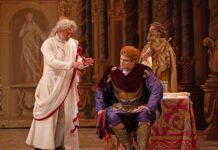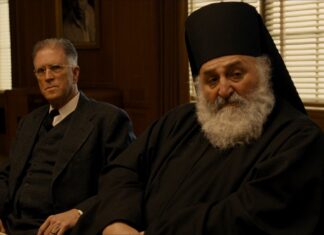SANTA BARBARA, Calif. (Los Angeles Times) — Thirty years ago, Charles Garabedian first showed his gorgeous suite of nine panelpaintings called “Prehistoric Figures” as the culmination of a San Diego museum survey of his career. They haven’t been seen together again since 1984’s Venice Biennale.
The paintings, most long since dispersed into public and private collections, have now been reunited for “Charles Garabedian: A Retrospective,” which opened last week at the Museum of Art here. Even if the rest of the show were not so engrossing — and it is — they would be worth the trip to Santa Barbara on their own.
When first shown it was hard to know quite what to make of them. One or two male or female nudes are shown in each, occupying relatively barren landscapes.
The figures twist, turn, tumble and even fall, their arms akimbo and often reaching toward the panel’s edge, as if trying to grab some aesthetic stability there. Unlike the similarly configured bodies in Robert Longo’s ultra-chic “Men in the Cities” drawings, begun the year after Garabedian started his series, stylish high drama is not their focus.
Garabedian’s figures are pushed to the foreground and their faces are placid, betraying no sense of anguish, ecstasy or despair. The landscape’s horizon line is low, making the nudes feel monumental, even though each panel is only 40 inches high. And the bright cerulean sky unfurled behind them seems massive — wide open and filled with limitless possibility.
Skulls and bones turn up here and there, unpretentious signs of mortality. But, as nudes unencumbered by style-dated fashion, they betray no particular time or place. Prehistoric, they nod toward future narratives, whether factual or fictional, by which people make sense of living.







